Teach Chinese Stroke Order Rules with Fun Activities
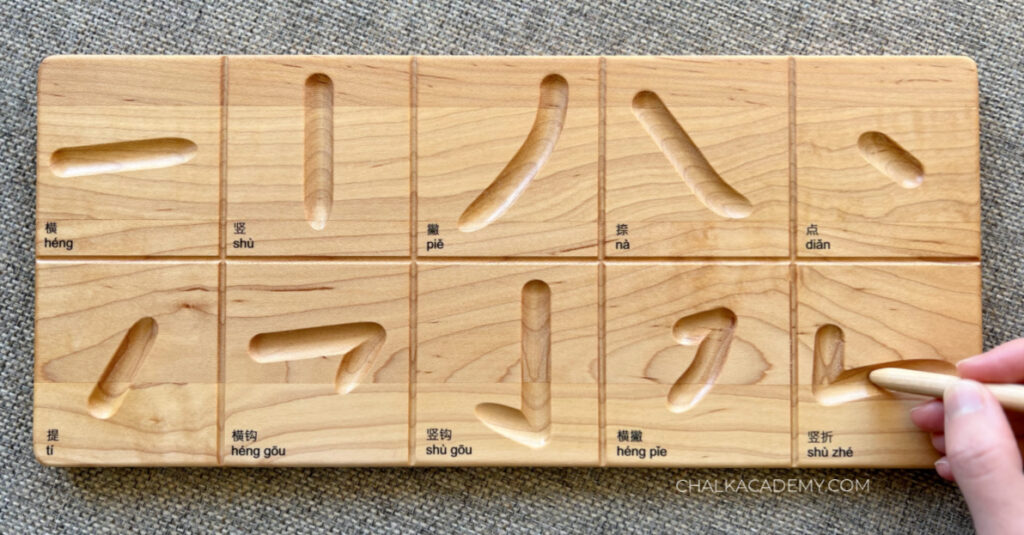
Learning how to write Chinese characters can be daunting for kids, especially with lots of strict rules to follow. But it’s possible to teach Chinese stroke order rules to kids while having fun!
At the very least, lessons don’t need to be tortuous. Despite my children’s different learning styles, I’ve been able to teach them how to follow Chinese stroke order through simple activities.
Why are Chinese stroke order rules important?
What’s the point? Why do I have to follow Chinese stroke order rules? These are questions my children have asked.
Authoritative replies like “This is the way Chinese people have been writing for centuries” aren’t going to motivate many kids. And just like washing your hands, you’re more likely to follow Chinese stroke order rules if you can understand why it’s helpful.
Let’s use the English alphabet as an example. Some kids instinctively write their “o” counterclockwise while others move their pencils clockwise. Eventually, single letters will combine into words. Those who have the habit of writing “o” counterclockwise will be more efficient at forming words from left to write, especially when writing in cursive.
For children who are learning to write Chinese characters, understanding the correct stroke order sequence makes writing more efficient. When you consistently write a Chinese character with stroke order rules, you’re building muscle memory. This helps writing become accurate and legible.
Even if your child is not yet writing, a general understanding of Chinese stroke order is helpful for learning to read. When kids can recognize the basic strokes, they’ll notice patterns in the radicals that make up characters. In turn, this helps with memorizing Chinese characters.
What are the basic Chinese strokes?
Many people find that saying the Chinese strokes out loud can help with remembering the proper order. The verbal and auditory input can give a little boost to muscle memory.
Whether you’re learning simplified or traditional Chinese, here are the names of the basic Chinese strokes:
- 横 / 橫 (Héng / Horizontal)
- 竖 / 竪 (Shù / Vertical)
- 点 / 點 (Diǎn / Dot)
- 提 (Tí / Rise)
- 撇 (Piě / falling left slant)
- 捺 (Nà / Falling rightward press)
- 横钩 / 橫鉤(Héng gōu / horizontal hook)
- 竖钩 / 豎鉤 (Shù gōu / vertical hook)
- 弯钩 / 彎鉤 (Wān gōu / bend hook)
- 斜钩 / 斜鉤(Xié gōu / slant hook)
- 横折 / 橫折 (Héng zhé / horizontal fold)
- 竖折 / 豎折 (Shù zhé / vertical fold)
Fun ways to teach Chinese stroke order rules to kids
Since we’re raising bilingual children in a monolingual community, we’ve explored countless educational products. After trying so many Chinese learning toys and watching my kids outgrow them, I’ve realized that simple is best.
Whenever your child is faced with strict rules, it’s helpful to give them options and a sense of agency.
Here are fun and affordable ways to teach Chinese stroke order rules at home or school. Which idea do you think your child will like best?
Learn Chinese stroke order rules with yarn
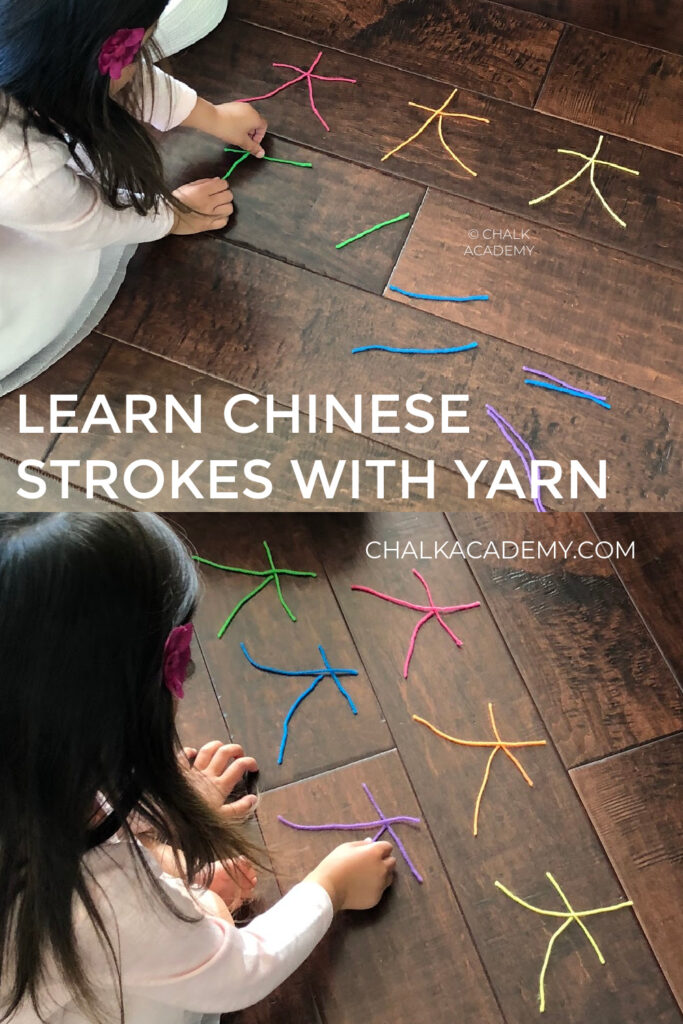
If you have yarn or ribbon at home, cut a few pieces to teach Chinese stroke order rules! Without any pressure of writing, something like yarn is excellent for showing the order of writing.
Note: Despite this pretty rainbow picture, my child thought the yarn activity was boring. Nevertheless, the few minutes we spent together were incredibly impactful on future Chinese writing.
Related: Fun Chinese Writing Activities for Kids
Chinese stroke order flashcards
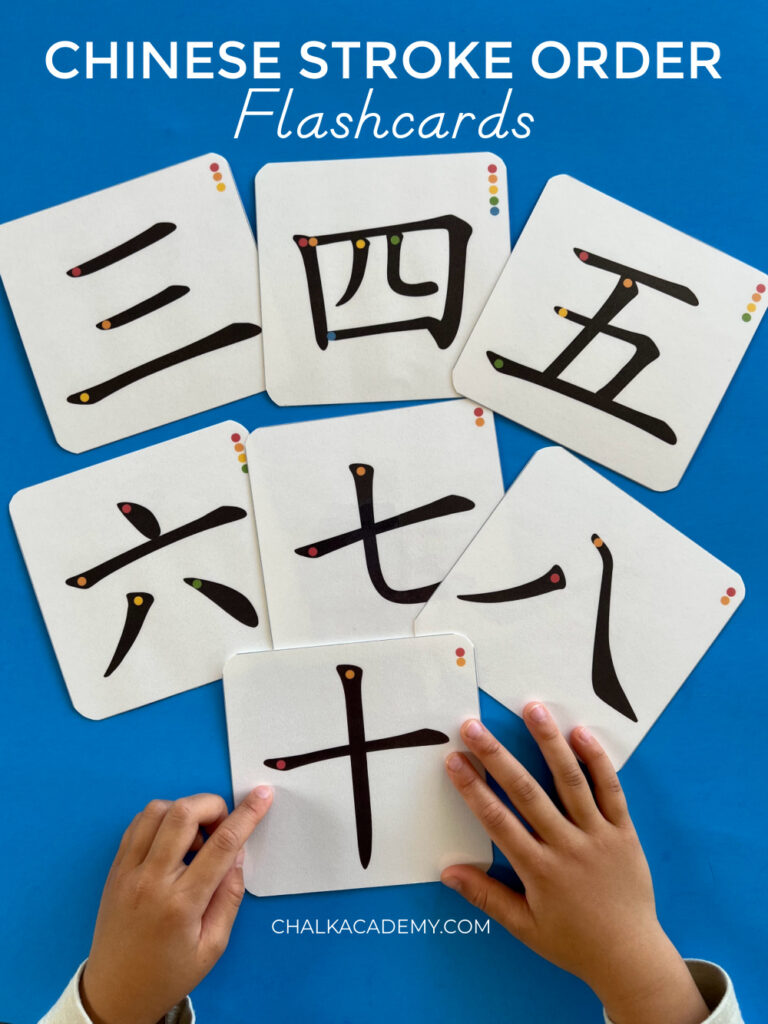
Our Chinese number stroke order flashcards have colorful dots to let you know where and in what order to trace. Inspired by the SunYa Publications Montessori sandpaper flashcards, I created these printable stroke order cards to make learning accessible. Plus, rainbow order is intuitive for children to follow.
With your finger, find the red dot and trace your finger along the stroke. Then move to the orange dot and subsequent colors of the rainbow.
Practice Chinese stroke order rules in sand
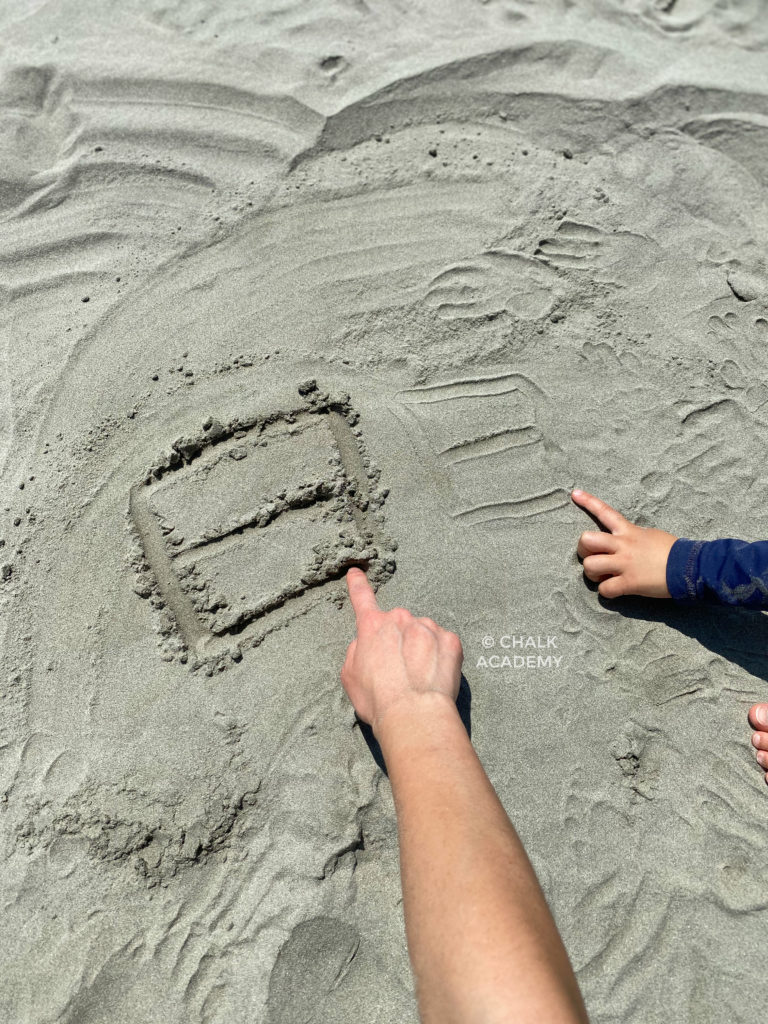
Next time you’re at the beach, take a few minutes to make a few marks in the sand! Even if you’re there to relax, you can show Chinese stroke order rules by writing a few simple characters. Your child might feel inspired to follow your lead.
If they don’t seem interested, they are still learning that writing is not limited to pencil and paper.
Related: How to Set Up Sensory Writing Trays with Salt or Sand
Learn Chinese stroke order rules with salt
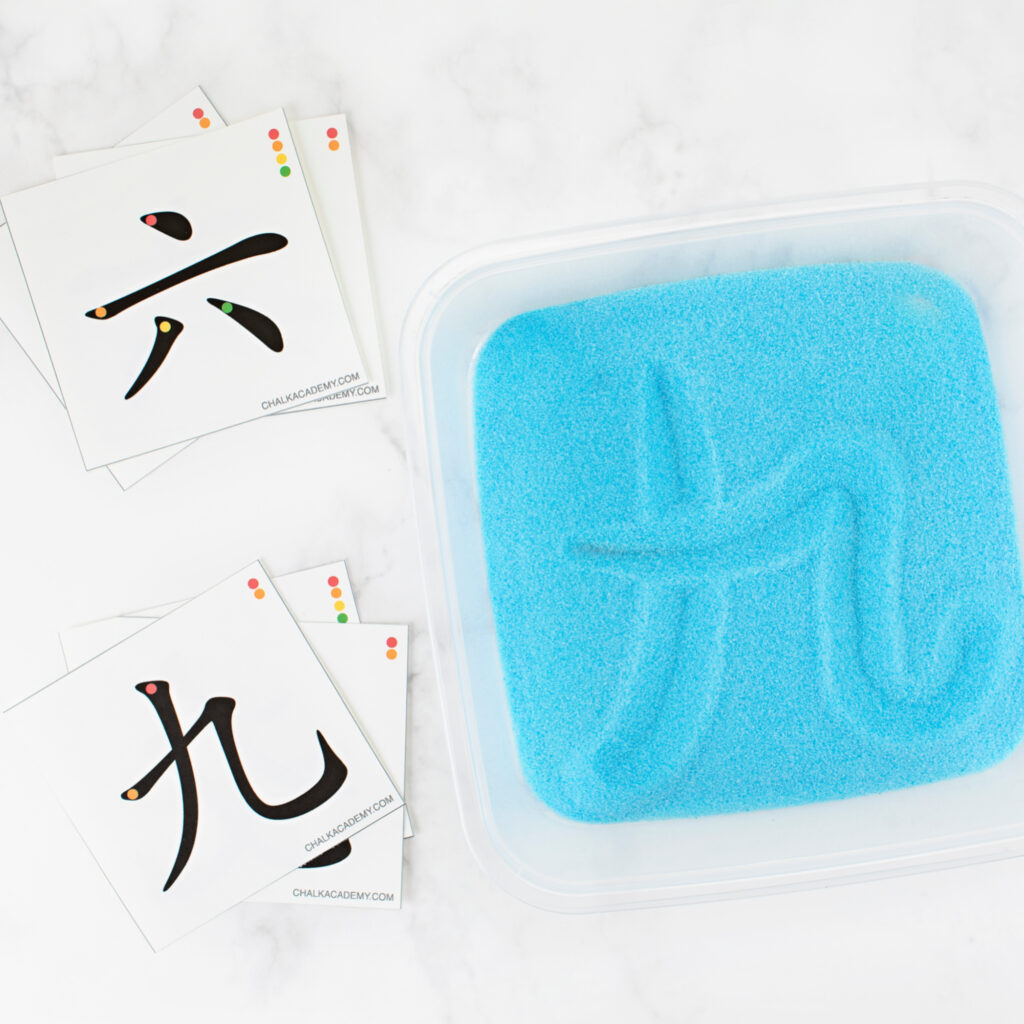
Not near a beach? No worries! You can create a similar sensory experience at home with a container of salt! Follow the dots on the Chinese stroke order flashcards. Then draw your word in the salt.
Make Chinese characters with play dough
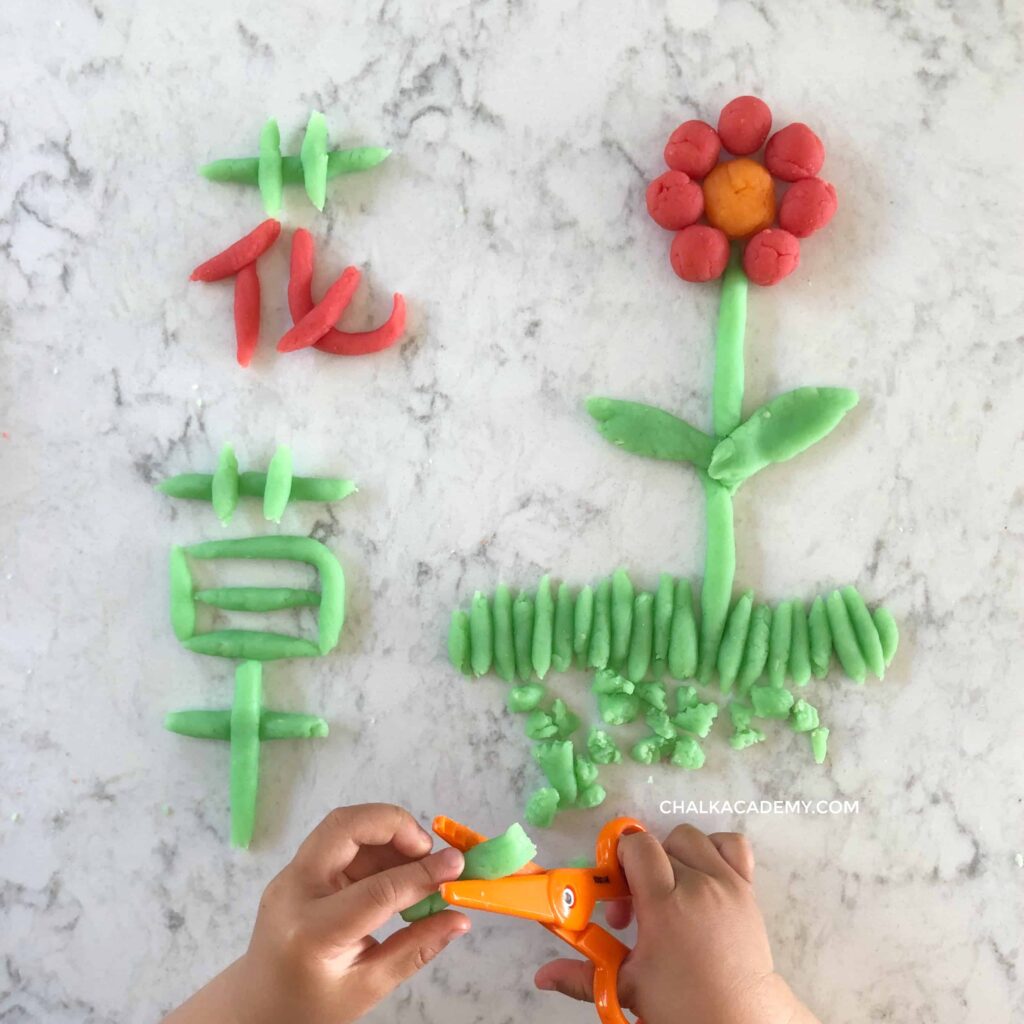
Similar to the yarn activity, play dough can be a fun way to build Chinese characters. With rolling and estimating the thickness and length of each stroke, this activity is more challenging.
No matter what your child decides to create, play dough is a wonderful way to build find motor strength and coordination skills though. Explore more Chinese learning ideas with play dough here.
Teach Chinese strokes with water calligraphy
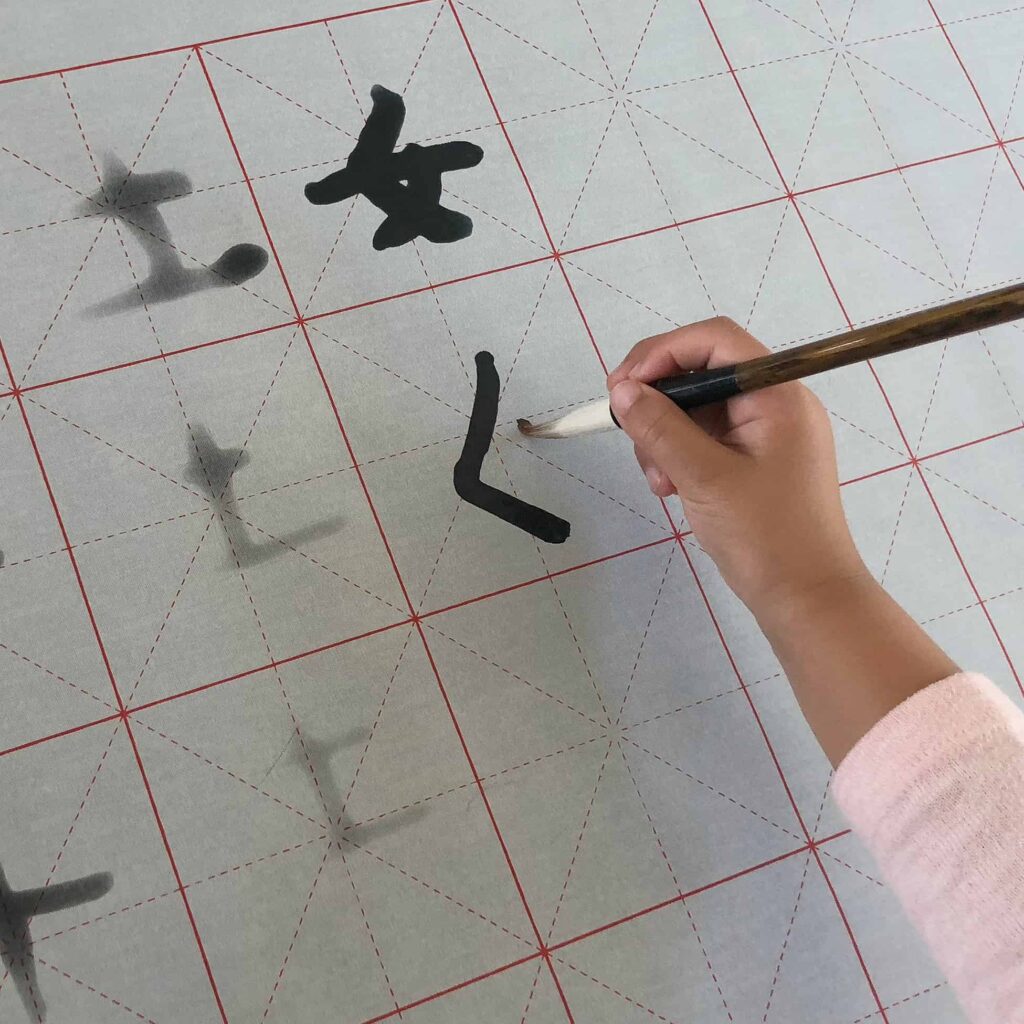
Water calligraphy mats are a very fun tool for practicing Chinese stroke order rules. The magical mats make water appear like black ink that fades after a few minutes. No worries about making mistakes or wasting paper. Just try again after the marks disappear.
Play with Chinese stroke order apps
Older children might be more motivated by to learn Chinese through digital games. Also, dictionary apps often have stroke order animation videos. Explore the best Chinese learning apps for kids here.
What if my child still hates writing Chinese?
It really depends on why your child resents it. Get curious, make patient observations, and ask yourself a few questions.
- Is your child a perfectionist? Show them your imperfect handwriting. Model making mistakes, and being okay with corrections.
- Does your child struggle with fine motor skills? Consider hands-on activities to strengthen finger and hand muscles. Some children also benefit from occupational therapy.
- Does following Chinese stroke order feel like one more rule to follow in an already restrictive schedule? If your children are learning Chinese as a second language at home, it’s important to consider whether writing is necessary.
Has your child learned Chinese stroke order rules?
How was the learning experience for your family? Please share your experience in the comments below.
Teach kids how to read Chinese characters
I successfully taught my children how to read and write Chinese characters, and I’m passionate about sharing our experiences and strategies.
In the following articles, you will find detailed, effective advice on how to teach Chinese characters to kids.
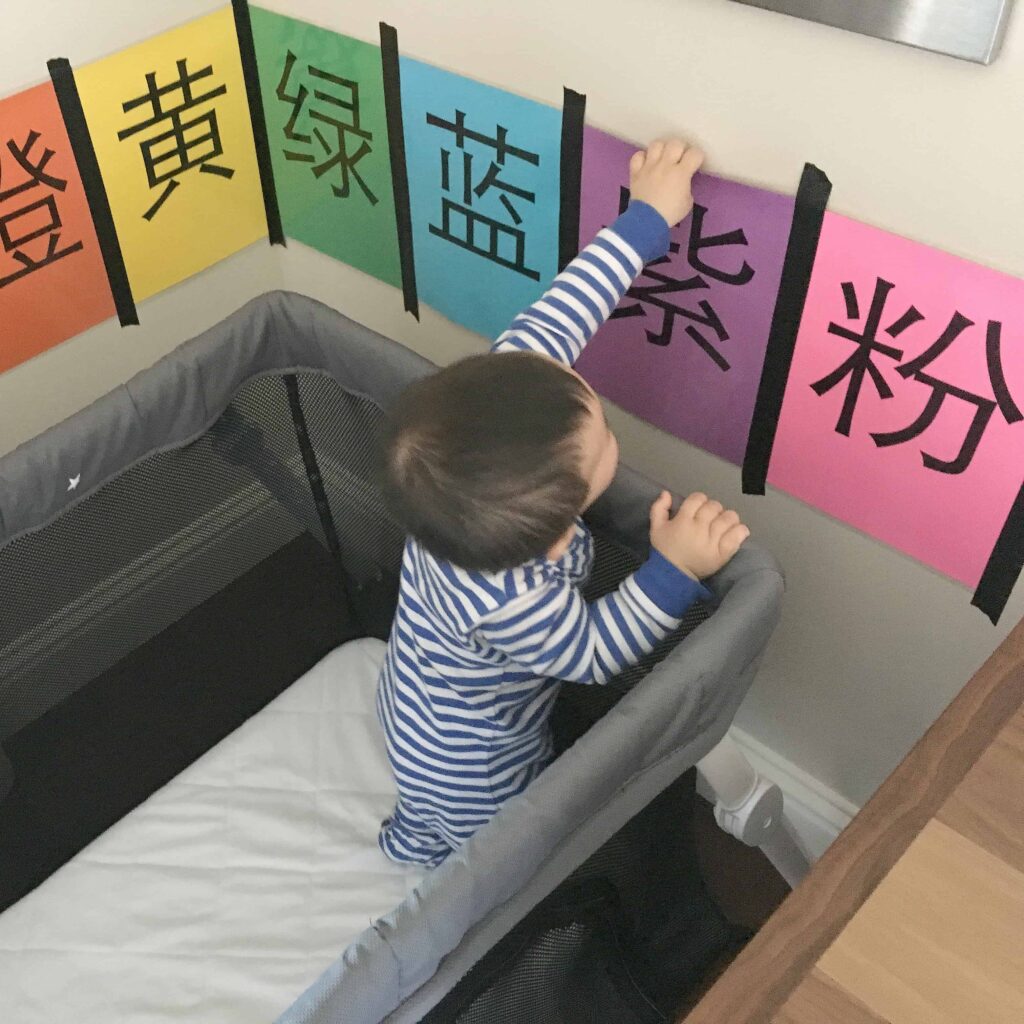
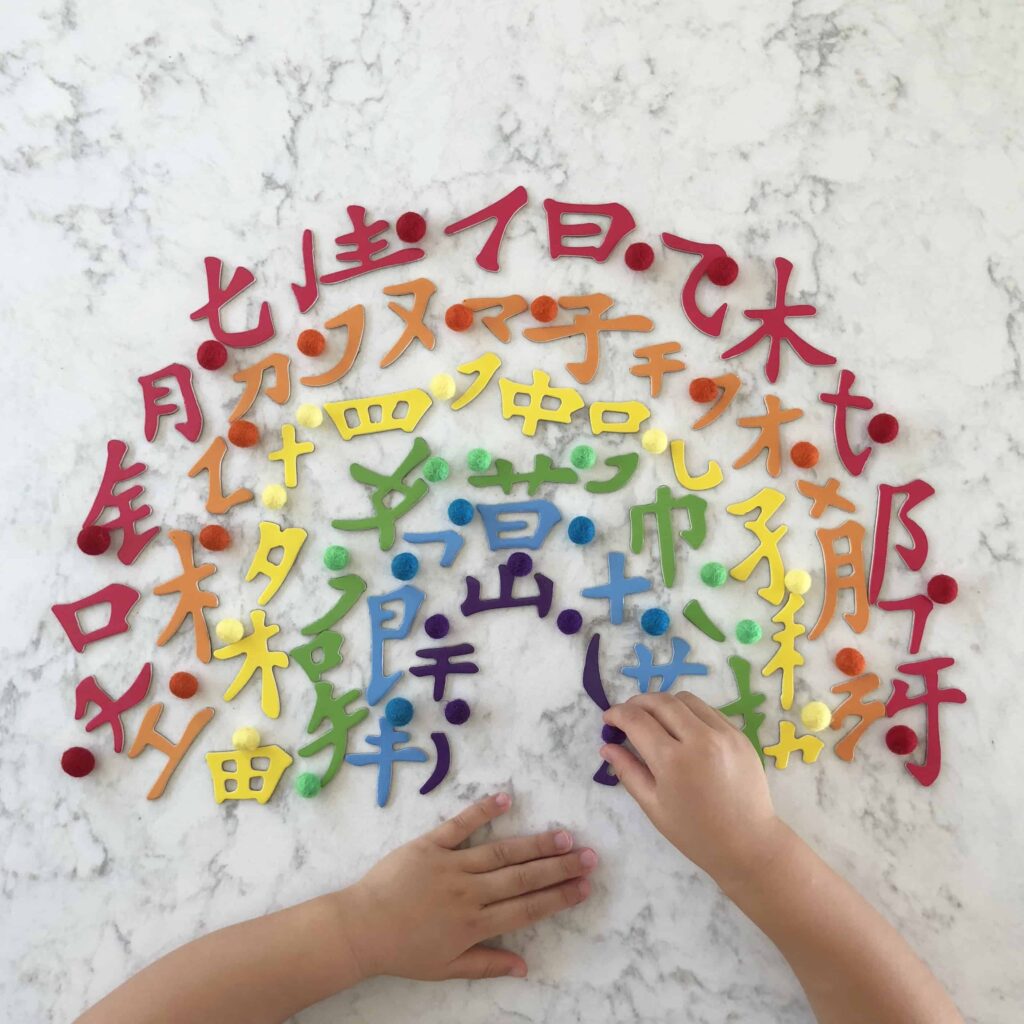
Hello there,
My name is Lucia and I am a Mandarin teacher in Brazil. Likewise, I have a mixed culture family.
I would like to thank you for your down-to-earth and hands-in post on teaching Chinese. We are always seeking for the best methods to instigate the learning and the memorizing of the inumerous Chinese characters.
Cheers.
Thank you for this valuable idea.
I’m listing birthday gifts for my daughter and since she will enter school next year, this can be her opportunity to learn with me at home during this year.
Hi Ricca! I hope your daughter enjoys the birthday gifts! 🙂
Can you share the place where i can place order for the learning tools?
Hi Grace! Thanks for stopping by! The link is at the end of the post in the “Where to buy” section. Hope that helps!
I am so excited to see there is such a set in the market. This is fun and multi-sensorial.
Our kids’ generation is blessed with many fun Chinese learning resources!